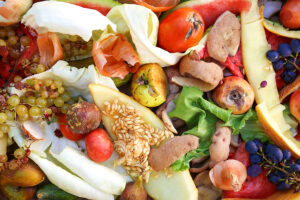New data shows rapid growth in US biogas production from food waste

According to the non-profit ReFED, Americans are expected to throw away around 160,000 tonnes of food scraps on Thanksgiving Day alone, representing roughly USD 550 million worth of wasted food.
Each year, households dispose of an estimated 26 million tonnes, while a further 30 million tonnes come from processors, supermarkets and restaurants.
While reducing waste at source remains the preferred approach, the ABC emphasised that biogas systems provide an effective way to recover value from unavoidable scraps.
Anaerobic digestion plants capture energy released as food waste and other organic materials — including manure and wastewater solids — break down, producing biogas that can be used for heating, electricity generation or transport fuel.
The ABC reports that 304 facilities in the United States now convert food waste into renewable energy, a rise of 19% over five years.
Of these, 118 sites focus solely on food waste, collectively processing more than 10 million tonnes of pre- and post-consumer inedible material annually.
Additional capacity comes from wastewater treatment plants and farm-based digesters. The Council counts 124 wastewater facilities co-digesting food waste with sewage solids, managing a further 1.1 million tonnes each year.
Another 62 farms blend food waste with manure, adding 1.7 million tonnes to the total processed.
Altogether, US biogas operations recycle around 12.8 million tonnes of food and other organic waste annually, producing over 35 billion cubic feet of biogas — enough to meet the yearly energy needs of approximately 283,000 households.
Patrick Serfass, the ABC’s executive director, said the country continues to undervalue the potential of inedible food and processing residues.
He argued that biogas facilities can turn these materials into “home-grown energy”, supporting local investment and job creation.
He urged municipalities and industrial food producers to adopt biogas technologies to manage resources more sustainably.
Looking ahead, the ABC estimates that recycling three-quarters of the food discarded by homes, retailers, restaurants and processors could generate about 115 billion cubic feet of biogas annually — equivalent to the energy consumption of nearly one million households.
The organisation expects the sector to continue growing as more communities and businesses look for ways to cut waste and bolster domestic renewable energy supplies.
















